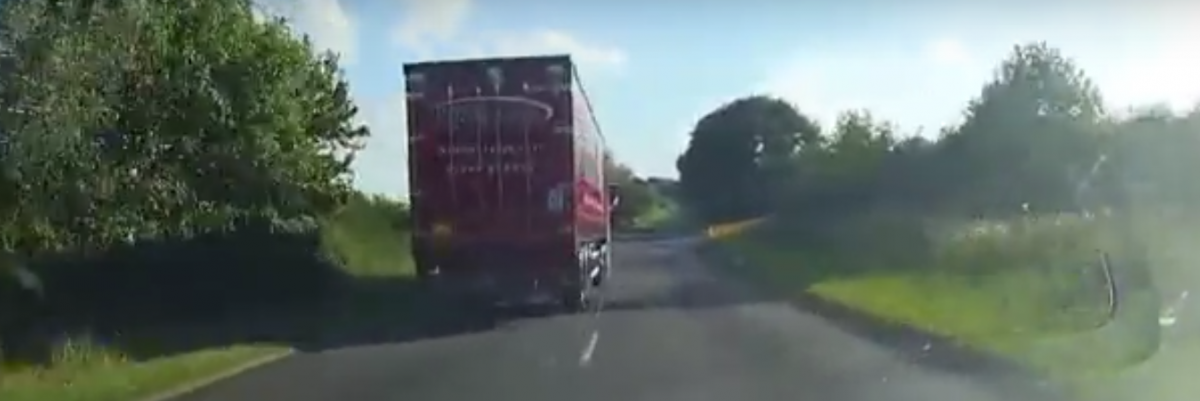Don’t get the wet weather blues this summer
We’re having a typical English summer, sun for a couple of weeks and then downpours for days on end. IAM RoadSmart’s head of driving and riding standards Richard Gladman advises a few ways to keep safe in heavy rain and floods.
Heavy rain
- Driving in heavy rain will affect your visibility, so take it slow. Rule 126 of the Highway Code states that the braking distance between yourself and another car on a dry road surface should be at least two seconds, and at least four seconds when driving in the rain
- Ensure your windscreen wipers are working correctly, and that the windscreen is clean – using your wipers when you have a dirty windscreen will just smear and make your visibility even worse
- Turn your headlights on. Many of us now have automated headlights, but often they will not come on in adverse weather conditions; ensure they are on so you’re visible to other road users. A good rule of thumb is that if you need your wipers on, then you need your headlights on too
Aquaplaning
Is your car aquaplaning? Here are some signs that you could be:
- Your engine may become louder if the driving wheels have lost grip
- It will feel as though you’ve dropped down in the gears causing revs to increase
- The steering may become lighter and unresponsive
If you experience any of this, try not to panic. Follow these tips:
- Ease off the accelerator or cancel the cruise control
- Hold the steering wheel straight and firm
- Do not hit your brakes hard
When your car gains traction you can slowly begin to use the brake and slow down.
How to avoid aquaplaning
If it’s been raining and you’re about to drive, there are things that you can do to help prevent your car from aquaplaning. Standing water as shallow as 2.5mm can cause an aquaplaning effect at speed so be sure to follow the steps below:
- Check your tyres – they can have a massive impact on how your car will handle in the wet. Watch this video by TyreSafe for more info: https://www.youtube.com/watch?v=pxuYOI_uruU
- Reduce your speed; problems occur when the tyres can no longer clear the standing water as they rotate. Going slower will allow time for the tread to do its job
- Be alert for flood warnings on the road and if you can see any water in the distance, be sure to slow down and prepare to go around it
- Avoid using cruise control in extreme conditions
Floods
- If there are floods you need to consider other routes to keep you safe. If the water is standing more than six inches deep, avoid driving through it. You can judge the depth in relation to the kerb
- If there are similar vehicles driving safely through, then you can make a judgement call on whether it’s safe to do so yourself.
- If the water is fast flowing, do not attempt to drive through it. There is a real danger of your car being swept away
If you have decided to drive through a flood take the following precautions:
- Go slowly and take it easy
- Press lightly on the clutch and add gentle pressure to the accelerator to increase engine revs but do so without speed. Do this in a similar way to how you do hill starts, this will prevent water from entering your exhaust. If you’re in an automatic, accelerate lightly but control the speed with your brakes
- If you have any doubt, turn back. Often modern saloon cars have an air intake in the wheel arch and could be below water level if going through a flood. If your engine takes in any water, it will immediately hydro lock and the engine will stop
- Remember to stay alert and avoid splashing pedestrians. If this is done accidentally you can still receive a fixed penalty and three points on your license for driving without due care and attention. If done deliberately it could be a public order offence, a court appearance, or a fine
Richard says “With the British weather the way it is, we should all be well practised at driving in the rain. Keeping your car maintained and the rubber (wipers and tyres) in good condition will help you stay safe. In the recent extreme weather, we have seen that standing water and floods are becoming more commonplace, so take extra care and if possible, avoid driving through standing water. If you’re in any doubt about the depth or surface underneath a flood, then it’s best not to take any chances.”
Courtesy IAM Inform Weekly News
| Virus-free. www.avg.com |



 ainy Day Driving
ainy Day Driving